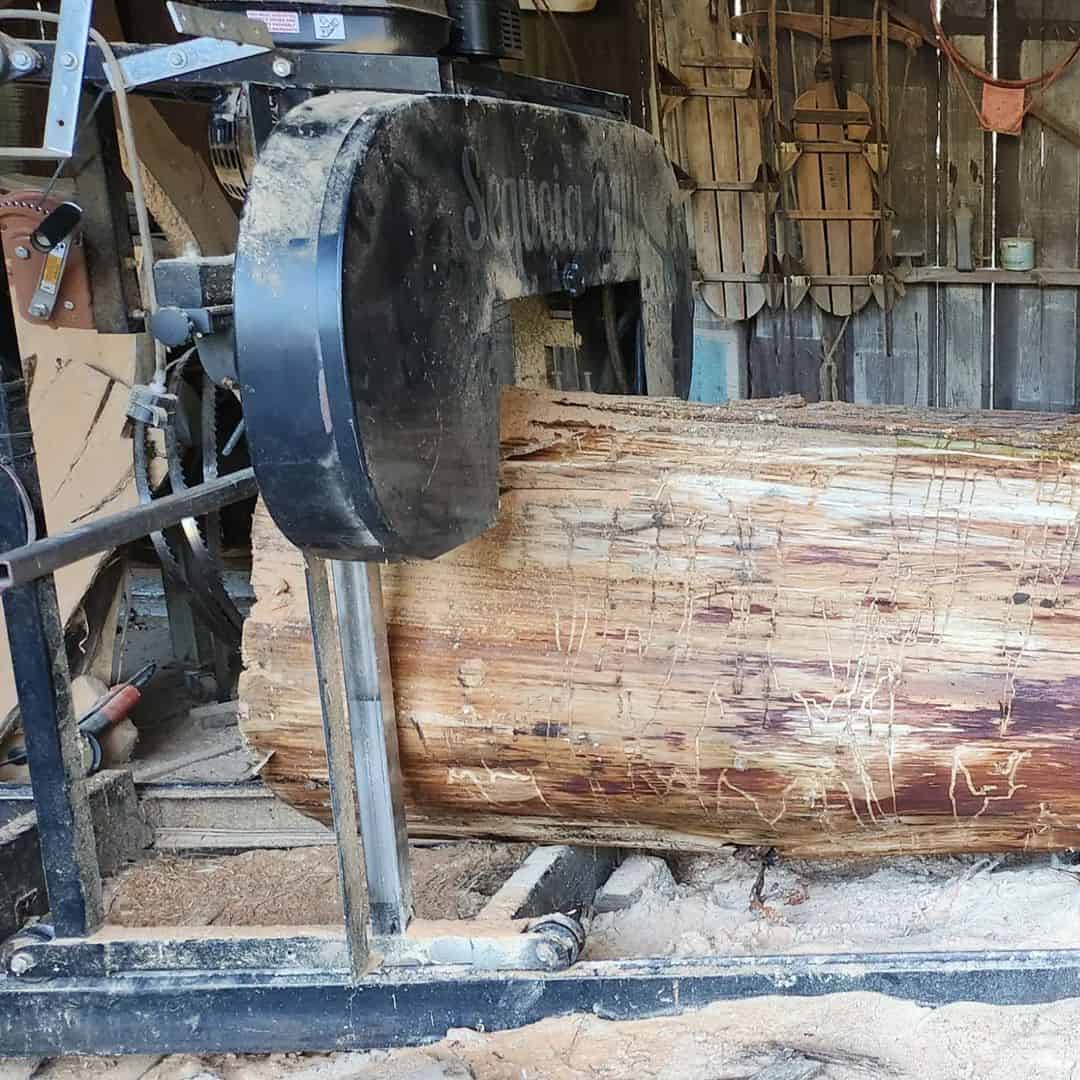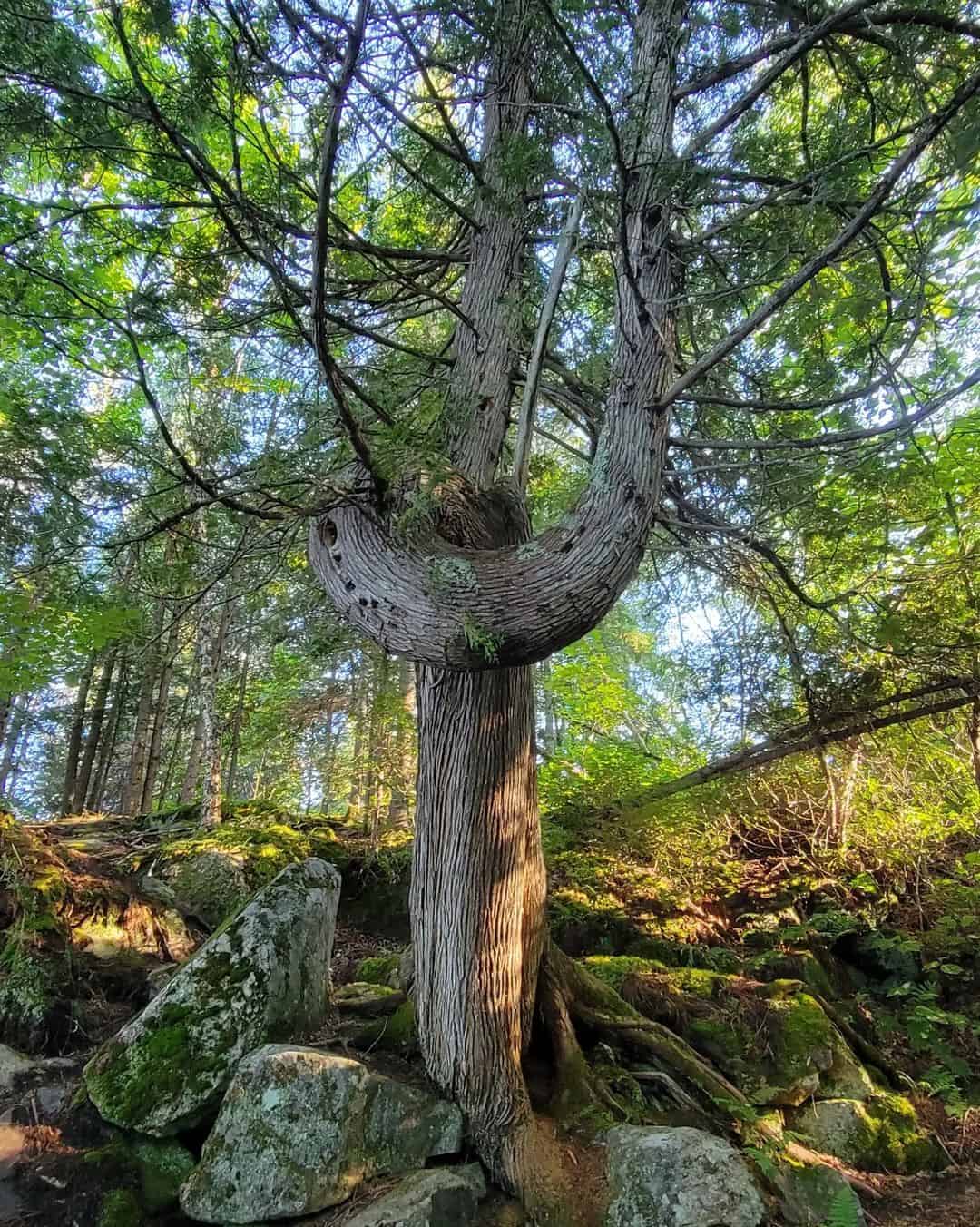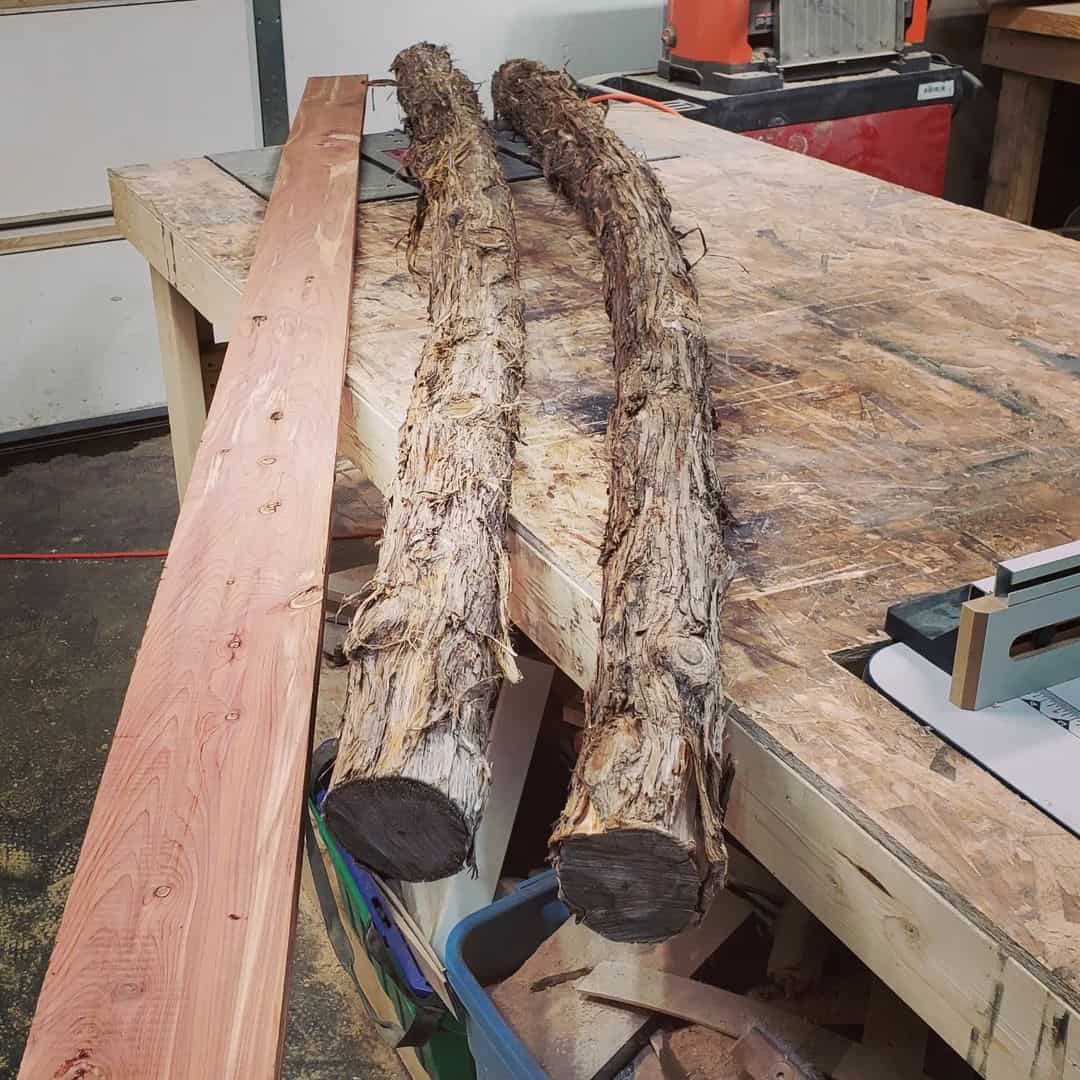Do you plan to use cedar for your next woodworking project? Are you curious about the properties of cedar?
Cedar is arguably the most popular choice of wood for construction around the home, both indoors and outdoors. It’s prized for its natural beauty, spicy aroma, and light-brown color.
Besides that, cedar stands out for its aesthetically appealing look and weather and insect resistance.
However, one question often arises when discussing cedar—”Is it a hardwood or softwood?”
Here, we will examine the various properties of cedar and determine whether it’s a hardwood. In addition, you will learn about the types of cedar trees and their potential uses.
Let’s dive in!
Table of Contents
Is Cedar A Hardwood or Softwood?
Cedar belongs to the plant species of gymnosperms. That means it comes from coniferous trees (trees that are evergreen and produce needles and cones, like pine and Douglas-fir). Coniferous trees or conifers are naturally softwoods, which makes cedar a softwood too.
In contrast, angiosperm represents wood from deciduous trees (flowering trees that lose their leaves annually). Deciduous trees are hardwoods and include red maple, birch, red oak, American sweetgum, etc.
Hardwood doesn’t necessarily mean that the wood is hard. It means the wood has a higher density and hardness compared to softwood. The same rings true for softwoods.
However, we have a group of trees that fall between deciduous trees and conifers, such as dawn redwood and golden larch.
The major differences between gymnosperms and angiosperms lie in their cellular structure. Unlike angiosperms, gymnosperm trees like cedar and pine feature simple cellular structures. Because of this, these trees are softer and less dense.
But that doesn’t make them lightweights. As a fact, some gymnosperm like Douglas-fir is strong, solid, and a popular choice for framing and structural support.
Characteristics of Cedar Wood
Cedarwood has several unique characteristics that make it ideal for any woodworking project. Some of its unique properties include:
1. Lightweight
Cedar’s lightweight nature makes it easy to handle and work with. That explains why boat builders opt for it over other softwood.
2. Durable
Some cedar species, such as the western red cedar wood, are highly durable. With proper care, cedar wood can last for decades and even centuries. This tree usually contains a unique natural preservative called thujaplicin, which makes the tree resistant to deterioration and long-lasting. The compound also gives the tree its sweet aroma.
3. Easy to work with
The low density and consistency of cedar make it easier to work with. You can easily cut, sand, and drill through the wood using hand or power tools. Cedar also takes nails and screws hassle-free.
4. Accepts stains and finishes
Unlike other softwoods, some cedar species are free of resin and pitch. As such, they can stain quite easily. Cedar also accepts a wide range of finishes, whether it’s lightly toned clear solutions or two-coat solid colors.
5. Rot Resistant
Cedar contains several extractives that give its rot and decay resistance. But remember, it’s only resistant to rot, not immune to it. At some point, it will eventually decay. Nevertheless, it’s a durable option for outdoor home construction.
6. Resistant to insects
The wood also contains natural oils that allow it to resist insects. That is why it is the ideal choice for making closets and chests.
7. Impressive thermal and insulating ability
Another fantastic characteristic of cedar is its good insulation. It offers the best insulation among softwood species and it’s far superior to steel or concrete. This property ensures the building stays warm in winter and cool in summer.
8. Uniformly textured

Cedar has even grain and contains no resin. For this reason, it’s less likely to twist, swell or wrap, unlike other softwoods and hardwoods. The wood will retain its aesthetic appearance for years.
9. Color
Cedarwood color varies depending on the species. Generally, the color ranges from light yellow to reddish brown.
10. Aromantic
The wood produces a pleasant aroma, thanks to its natural oils. Throughout America and Europe, cedar is used to make beehives because the scent repels insects. When used to make closets and chests, the aromantic oils repel moths and carpet beetle larvae, keeping your clothes safe.
11. Sustainability
Another reason most individuals like cedar is that it’s highly sustainable. This property can be attributed to its high carbon sequestration potential and carbon offset value.
What Are the Types of Cedar Trees?
Several types of cedar trees grow throughout the world. But the most common ones include:
1. Western Red Cedar
Native to the west coast of North America, the western red cedar (Thuja plicata) is the most widely distributed species of cedar. It’s popular for its natural beauty and durability.
The unique softwood features a reddish-brown color and straight grain with fine, even textures. The wood is also available in pinkish-brown or yellowish-white colors.
Like most cedar, the western red cedar is resistant to rot and easy to work with hand and machine tools. Plus, it holds nails, screws, and glue well.
The western red cedar lumber makes a brilliant choice for boats, musical instruments, decks, siding, crates, posts, and shingles.
Other names for western red cedar
- Pacific red cedar
- Giant cedar
- Shingle wood
- Giant Arborvitae
2. Eastern White Cedar

Unlike the western red cedar (Thuja occidentalis), this cedar species is native to the Northeastern United States and Canada. It’s renowned for its fine texture, rot and decay resistance, and light color.
It is the perfect cedar wood for indoor projects, like cabinetry and paneling. For external use, the wood can help in cabin building, fence building, shingles, and boat construction. Furthermore, its natural oils can be used as insecticides and disinfectants.
Other names for eastern white cedar
- Northern white-cedar
- Eastern arborvitae
3. Alaska Yellow Cedar
As the name suggests, the Alaska Yellow Cedar (Cupressus nootkatensis) originates from Alaska. It’s also native to Canada’s west coast and coastal regions of Northwestern North America.
Besides its distinctive yellow color, it features a straight to uniform medium texture. The wood is resistant to rot and decay and is extremely durable. It’s often used for boat building, outdoor furniture, fences, musical instruments, and carving.
Other names for Alaska yellow cedar
- Yellow cypress
- Alaska cypress
- Nootka cedar
- Yellow cedar
- Nootka cypress
4. Port Orford Cedar
The Port Orford Cedar (Chamaecyparis lawsoniana) is one of the rarest cedar species. It only grows in Northern California and Southern Oregon, and only a few trees can get harvested. Due to its rarity, it is quite expensive.
Port Orford Cedar shares the same characteristics as other cedar wood. But its selling point is its spicy, lemony aroma that’s mesmerizing. It’s used to make candlesticks, chests, toys, and for interior applications.
5. Spanish Cedar
Spanish Cedar (Cedrela odorata) or Cedro originated from Central and South America and parts of the Caribbean. Its heartwood is relatively uniform and has a light pinkish to reddish-brown color.
Spanish cedar wood has a distinct, lingering scent, which makes it the perfect wood for cigar boxes. It is easy to work with and very soft. Besides, the wood is resistant to termite attack and has excellent weathering characteristics.
6. Incense Cedar
As you have guessed, this cedar species is renowned for its scent. Native to the western United States, Incense cedar (Calocedrus decurrens) wood has a reddish-brown with streaks or dark red color. It’s durable and resistant to weather elements.
Cedar is popular among furniture builders and used to build scented clothing storage, including wardrobes, chests, closets, and drawers.
Other types of cedar trees worth mentioning include:
- Atlas Cedar
- Eastern Red Cedar
- Cyprian Cedar
- Atlantic White Cedar
- Lebanon Cedar
- Northern White Cedar
Common Uses of Cedar Wood

For centuries, Cedarwood has been used for a variety of purposes. Below, we have provided you with several common uses of cedar wood.
1. Outdoor Construction
Versatile, durable, and resistant to rot and insects, cedar makes the perfect wood for outdoor construction projects, including decking, siding, fences, greenhouses, and arbors.
While cedar can withstand exposure to various elements, the lumber is no good with direct ground contact. So, if your project involves burying the wood in soil, opt for special versions of cedar rated for “ground contact”.
2. Indoor Construction
Cedar wood comes with a beautiful and distinctive grain design and a pleasant aroma. Because of this, homeowners can use wood for indoor projects like flooring and interior paneling.
3. Other Uses
- Pencils
Another use of cedar is making pencils. The fine-grained lumber sharpens easily and leaves less sawdust.
- Outdoor furniture
The wood makes amazing furniture for outdoor use, like Adirondack chairs. Some people also use it in building saunas and hot tubs, among other outdoor equipment.
- Clothing storage
Some cedar variants make fantastic clothing storage furnishings, including trunks, wardrobes, and chests. As mentioned earlier, the wood contains a natural antibacterial and antifungal agent–thujaplicin. Other types of cedar wood, like Spanish cedar, have a natural resistance to insects. These distinct properties help protect your clothes.
- Shingles
You can also use cedar to produce wood shingles for your home’s interior and exterior walls and roof. Part of the reason, the wood is soft and easy to split on the spot. Cedar’s antifungal quality means it is resistant to rotting and can last long. Furthermore, it has an excellent insulating ability.
- Musical instruments
Cedar is also the preferred wood for making a range of musical instruments, like violins, pianos, and guitars.
Final Thoughts
Cedar is a softwood that offers great durability and resistance to rot and insects while remaining lightweight and easy to work (with hand and power tools). On top, the wood is versatile and comes with a pleasant smell.
Cedar has numerous applications in both indoor and outdoor home construction projects. For example, homeowners can use it for fencing, decking, siding, and making closets, wardrobes, and chests. Some cedar species are used to produce pencils and musical instruments.
Do you have any queries or need clarification on something? Leave a comment below.